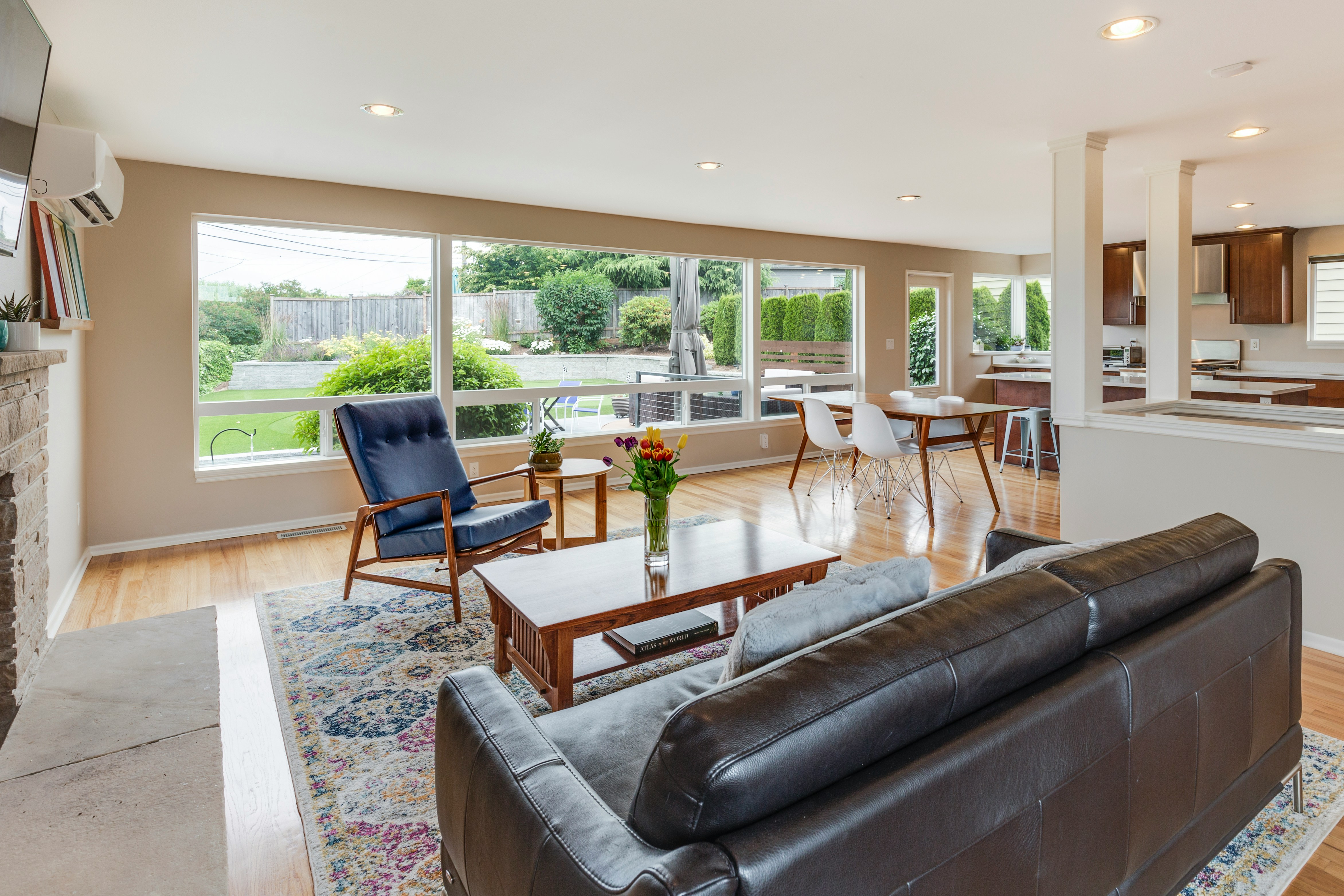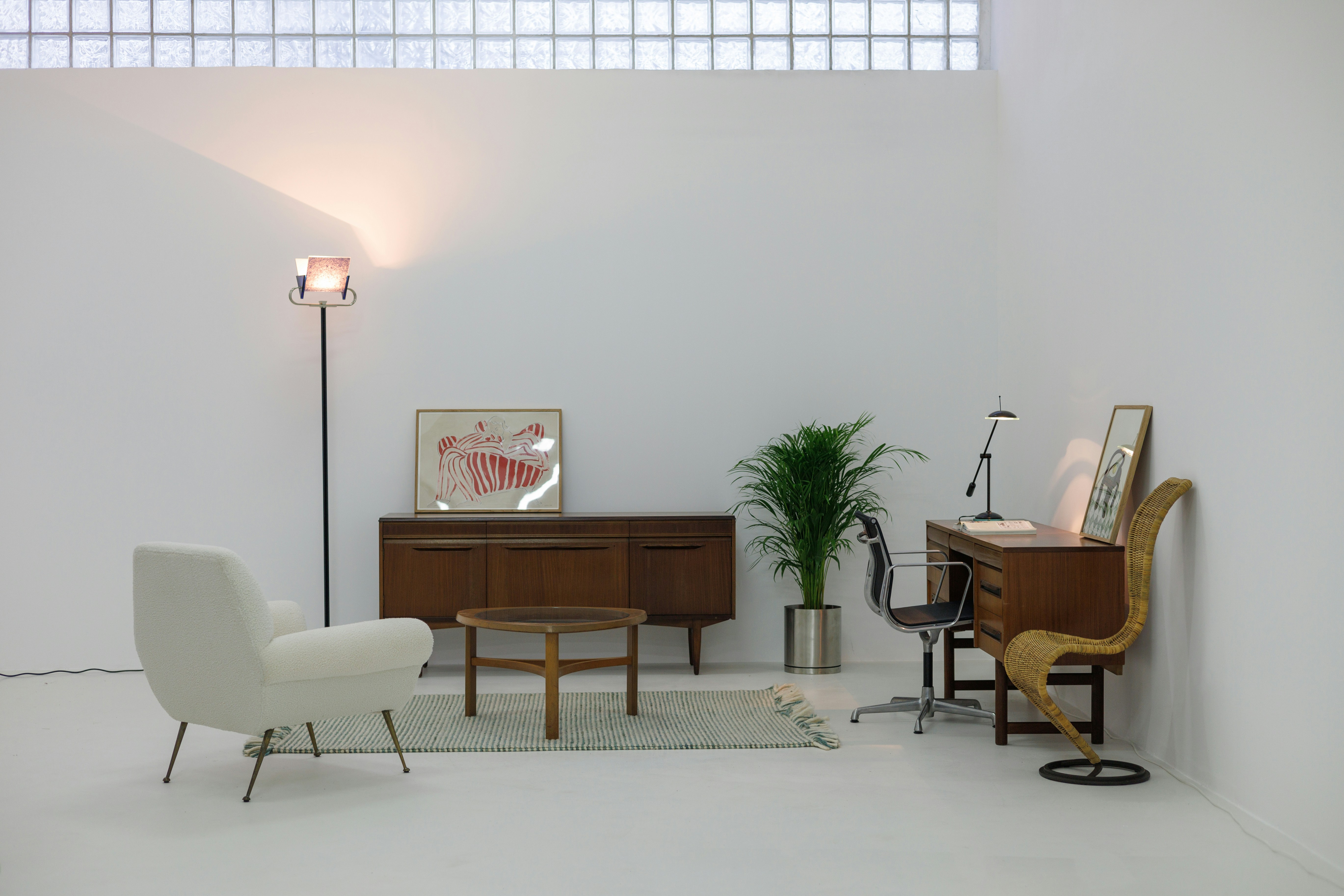Mid-Century Modern is an art, architecture, and design movement that developed during the mid-20th century, particularly from the 1940s to the 1960s. Shaped by industrialization, technological progress, and the post-war reconstruction period, this movement is characterized by principles of functionality, simplicity, and suitability for contemporary lifestyles. Rejecting excessive ornamentation in aesthetics, it represents an approach that combines clean forms, natural materials, and the possibilities of mass production. Emerging alongside modern art, this approach is based on the idea that everyday objects can be designed in harmony with the ideals of the modern world.

A Home Decorated in the Mid-Century Modern Style (unsplash)
History
The Mid-Century Modern movement traces its origins to the modernist trends that took shape in Europe in the late 1930s and matured alongside the social, economic, and cultural reconstruction processes that followed World War II. The rapidly changing living conditions, urbanization, and the rise of mass production after the war highlighted the need for functional and accessible designs. During this period, aesthetic value ceased to be merely a matter of form and became an element of democratic life. Through museums, exhibitions, and design magazines, modern design was introduced into the everyday lives of the general public.
Throughout the 1950s, cities such as Vienna, Stockholm, Milan, London, and New York became centers where different interpretations of the movement evolved. In Austria, designers such as Oswald Haerdtl, Roland Rainer, and Anna-Lülja Praun combined modern form with craftsmanship; in Sweden, Josef Frank produced designs that integrated functionalism with natural materials. In Italy, the Bel Design approach, shaped through the collaboration of Gio Ponti and Cassina, merged traditional craftsmanship with modern production. In England, the Utility Furniture Programme developed during wartime shortages set the direction for functional and economical furniture design. In the United States, the Museum of Modern Art’s Good Design program introduced modernist aesthetics to mass audiences, while designers like T. H. Robsjohn-Gibbings represented both modernism and its critique. By the 1960s, the Mid-Century Modern movement had influenced both lifestyle culture and industrial design on an international scale.
Key Characteristics
The Mid-Century Modern movement is built on principles of formal simplicity, functionality, and harmony with contemporary lifestyles. The designs of this period reflect a balanced and minimal aesthetic, stripped of unnecessary ornamentation and emphasizing clarity of form. In material selection, natural elements—particularly wood, brass, and woven fabrics—came to the forefront, while the tradition of craftsmanship was preserved through its integration with industrial production techniques. Organic forms, curved lines, and human-scale proportions ensured both aesthetic and ergonomic unity.
At the core of the movement lies the idea of democratizing modern design. For instance, in T. H. Robsjohn-Gibbings’ Widdicomb Collection, the goal was to make high-quality design accessible to the wider public. Designs, based on the principle of “simplicity through function,” offered both aesthetic and practical solutions. In Vienna, the café and public space furniture designed by Haerdtl and Rainer brought together functionality and the needs of modern urban life. In Sweden and other Scandinavian countries, Josef Frank’s work combined simplicity with warmth through colorful fabric patterns, while in Italy, Gio Ponti’s Superleggera chair exemplified the balance between lightness and durability.
The Mid-Century Modern design philosophy blurred the boundaries between art, craft, and industry. The belief that objects of aesthetic value could also be part of everyday life became one of the defining principles of the period. This understanding contributed to the creation of a design language that both adapted to the pace of the modern world and possessed a “timeless” quality.

Furniture Designed in the Mid-Century Modern Approach (unsplash)
Regional Developments
The Mid-Century Modern movement evolved across different geographies after World War II, taking on distinct local interpretations. Each region developed its own design language by combining local production traditions and social conditions with modernist principles.
Central Europe and Vienna
In the 1950s, Vienna became a center for balanced and functional design during the postwar reconstruction period. Architects and designers such as Roland Rainer, Franz Schuster, and Oswald Haerdtl adapted the modernist approach to public spaces and everyday life. Rainer’s Wiener Stadthalle project and Schuster’s social housing works exemplify the unity between architecture and furniture design. Haerdtl’s café furniture, together with his wife Carmela Haerdtl-Prati’s textile designs, brought Viennese modernism into daily life. Female designers like Anna-Lülja Praun contributed to the creative design environment of the period with light, simple, and functional furniture combining metal and wood.
Scandinavian Countries
Scandinavian modernism, known for its simplicity and natural aesthetic, became one of the cornerstones of the Mid-Century Modern movement. Austrian-born Josef Frank played a decisive role in shaping this direction after emigrating to Sweden and collaborating with the company Svenskt Tenn. In Frank’s designs, colorful fabric patterns, the natural use of wood, and practical solutions suited to daily life came to the forefront. This approach strengthened the idea of democratic design in the Scandinavian countries, maintaining a balance between natural materials and human scale.
Italy
In Italy, the movement known as Bel Design took shape around Milan during the postwar period. Gio Ponti’s Superleggera chair, developed in collaboration with Cassina, represented the ideal fusion of craftsmanship and industrial production. Domus magazine and the Triennale di Milano exhibitions contributed to the international recognition of modern Italian design. Italian modernism combined innovation in material and form with refined aesthetics and high production quality.
United Kingdom
Modern furniture production in the United Kingdom developed under the Utility Furniture Programme, initiated during wartime, which aimed to produce economical, functional, and durable products. Exiled Viennese designers such as Jacques and Jacqueline Groag, Franz Singer, and Bruno Pollak made significant contributions to this process. The Groags combined mass production with artistic quality, while Pollak’s tubular steel chairs were widely used in British public interiors. During this period, Britain emerged as a center emphasizing the human-centered, restrained, and economical aspects of modernism.
United States
American modernism acquired a character that reflected not only aesthetics but also social ideals. The Museum of Modern Art’s Good Design exhibitions played a pioneering role in democratizing design by making modern products accessible to the public. August Heckscher’s emphasis on individualism—linking modern art with freedom—formed the cultural background of this era. T. H. Robsjohn-Gibbings’ furniture collections for Widdicomb simplified modernism to suit American daily life. However, over time, Gibbings took a critical stance toward the stylistic repetition of modernism, turning instead toward classical values and a “timeless” design philosophy.
Türkiye
In Türkiye, the influence of Mid-Century Modernism began to appear in architecture and industrial design from the 1950s onward. Postwar urbanization, housing needs, and the development of industrial production created a context in which modernist design principles could be applied. During this period, architects such as Sedad Hakkı Eldem, Turgut Cansever, and Emin Onat laid the foundations of modernist architecture in Türkiye by integrating local architectural traditions with contemporary forms. In interior and furniture design, designers trained under the influence of the Bauhaus produced simple and functional works, favoring modern lines particularly in public buildings and housing projects. Institutions such as Istanbul Technical University and Middle East Technical University played a key role in the academic development of modernist design thinking.
The Mid-Century Modern approach in Türkiye, much like its European counterparts, was based on balancing national identity with universal modernism. The use of local materials, sensitivity to climatic conditions, and simple forms became the distinguishing characteristics of Turkish design in this period.


